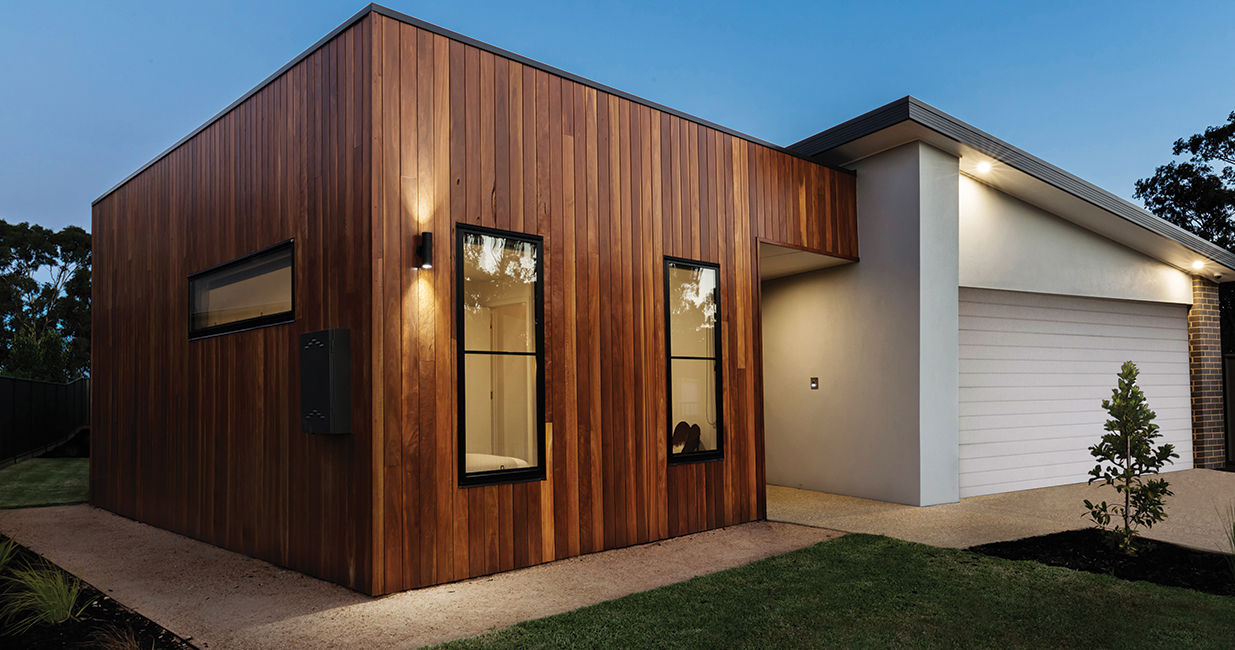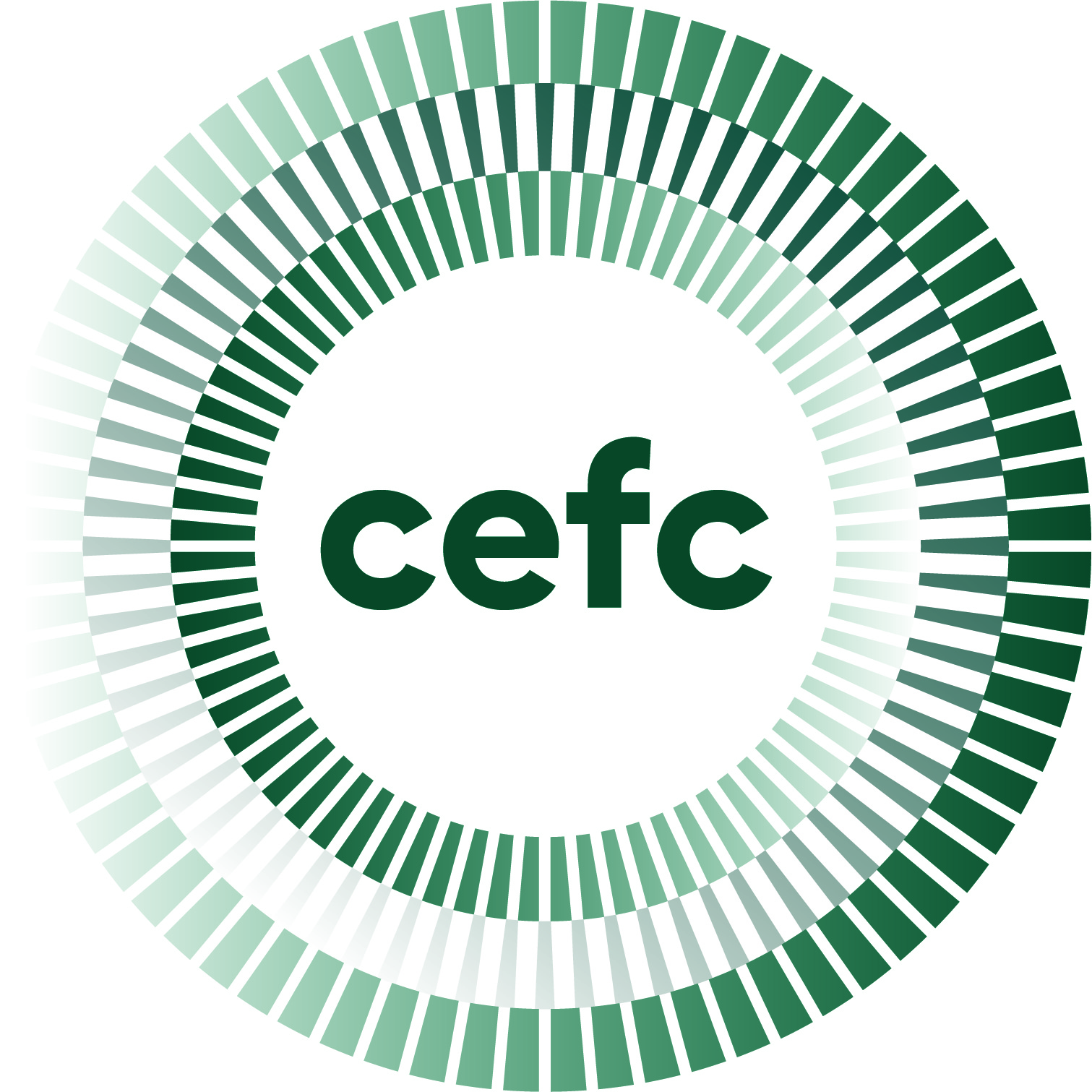
The next frontier: green home loans in Australia
Sustainable-finance development in Australia has tended to focus on the institutional sector. But a vast quantity of assets on bank balance sheets are residential mortgages, which to date have been almost untouched by environmental considerations. Clean Energy Finance Corporation and KangaNews gathered a group of market participants at the cutting edge of green home-loan development to discuss the product’s potential and its funding implications.
PROPERTY’S POTENTIAL
Davison What is the significance of residential property as a source of emissions, and what difference could green home loans make?
TAM Property accounts for 23 per cent of Australia’s emissions and residential property accounts for half of this. The main source of residential emissions is heating and cooling, which account for 40 per cent, followed by appliances at 25 per cent and water heating at 23 per cent. Green home loans can deliver a multitude of benefits, including reducing households’ energy load and demand on Australia’s grid. The technology is already available to address heating and cooling emissions through building high-quality residential properties.
There is also a massive sector of residential-mortgage lenders in Australia. If everyone does their bit to help customers understand what it means to build a green home, and the benefits they would receive from doing so, it would be a win-win for everyone.
JENKINS Residential mortgages are a huge proportion of National Australia Bank (NAB)’s book – roughly 50 per cent of the bank’s balance sheet. The average house emits around seven tonnes of greenhouse gases per year, and if you extrapolate this over our book it is immense. If we can reduce this by a sizeable amount it will have a marked impact.
The Clean Energy Finance Corporation (CEFC) and NAB have been participating in and observing the EU’s energy-efficient mortgages initiative (EEMI), which has landed on a common definition among EU members of what an energy-efficient mortgage should do and how to go about collecting and measuring data.
The participants use a number of data points and arguments. The rationale is that a green mortgage will lower energy bills and incentivise more energy-efficient behaviour by homeowners. It also reduces outgoing costs and therefore increases mortgage serviceability.
From a lender’s perspective, this should theoretically deliver a better credit-quality mortgage, which in the long term should give credit benefit. At the same time, a growing group of studies and anecdotal evidence suggests increased home value can be attributed to energy-efficient homes, for the same reasons. It is a virtuous circle if we can achieve the outcome, but there are some challenges to get there.
KERN Bank Australia is a customer-owned bank and residential mortgages are an even larger share of our portfolio. Our customers are keen to see us take action on climate change, so the green-loan product seems like a logical path.
We think, with some small tweaks and nudges, that we can encourage people to make long-term change. Building stock lasts for a long time so if we can get people to make changes at the time they build or take out a loan it can have a long-term impact.
AUSTRALIAN DEVELOPMENTS
Davison What was the rationale behind the CEFC’s decision to establish a set of green home-loan criteria with Bank Australia?
TAM Through working with Bank Australia we realised customers would demand this product not just for building new homes but also for existing homes and renovations. We had to find a way to meet demand for all three products.
We also added the Victorian government-supported residential-efficiency scorecard, where a tailored solution can be provided to the end customer on how they can improve their home’s energy efficiency through renovation and within their budget constraints.
We spent a lot of time putting together a green home-loan product that is easily implemented by a bank, easily understood by customers and credible for investors.
In doing this, we got in touch with Fannie Mae to ask how it put together its green-loan product. Neatly, it relied on industry-credible tools to make this determination. It also required certain uplifts from the minimum standard to be achieved. We copied this concept and used the government-supported NatHERS [Nationwide House Energy Rating Scheme] certification, which is available nationally.
KERN Around 50 per cent of the buildings we will have in 2050 have not been built yet, so it will be fantastic if we can influence the way these homes are built now. But the other side is that the remaining 50 per cent is homes we already have. There is also a huge opportunity in getting these upgraded.
Establishing a product that is easy for the bank to implement has been interesting. This means making sure lenders and credit-assessment teams are able to implement the rules in a way that gives us confidence in what they are doing.
We want something our customers can connect with and understand, which in turn means we are ultimately generating high-quality assets that can go into our sustainability-bond pool in the future.
TAM Australia’s building code has not changed for 10 years. On average, the minimum requirement is to build to six-star NatHERS rating. But the technology available to create more energy-efficient homes has improved a lot in 10 years.
The cost to lift the energy-efficiency rating of a new-build home by one star is 1-4 per cent of construction cost. When building a new property there is actually a lot that can be done to improve energy efficiency at no cost, for example reorienting the direction the house faces.
There are two sides of the coin for a green home loan. We want to address the thermal fabric and appliances that can make a home operationally efficient. Homeowners can then add solar and battery capability on top and will be well subsidised for the future. A lot of people think adding a battery for solar-power storage will make a home green, but this is more of a band-aid solution to the problem. For us, renewable-energy generation is separate. Thermal performance is foremost, whether for renovations or new build. This is why we focus on the NatHERS rating.
Getting borrowers on board
The property market is an Australian obsession. As such, preferential pricing for green-mortgage borrowing might be enough to make emissions considerations a key part of the buying process.
KERN We launched the product earlier this year with investment from the CEFC [Clean Energy Finance Corporation]. Working together, for homes that qualify we can provide a discount of up to 40 basis points for up to five years. Half of this comes from CEFC and half from Bank Australia. This is a reasonably large discount and it is becoming relatively larger as rates decrease. We thought when launching the product that it would be enough to encourage households to do the extra work and think about the benefits.
We have been creating a lot of content on clean-energy home loans we share with our customers. This is not with the expectation that they will all suddenly apply but to plant a seed and get people thinking so that down the track - if they are renovating, building or buying - it will be on their mind.
Davison NAB issued a residential mortgage-backed securities (RMBS) deal with green notes in 2018. Back then, the absence of nationwide building standards was a challenge. Could the CEFC standards create a smoother path to market?
JENKINS The challenge we had when NAB did the work for its green RMBS was that it was based purely on what could be verified and this was only for new builds. A national cabinet group is now doing work to support an upgrade of the national construction code, which will raise the bar for new housing construction.
This will be consistent with what the CEFC and Bank Australia are doing now. It will result in NatHERS becoming a nationwide tool for the whole of houses. Previously it had a thermal-efficiency focus, whereas it will now incorporate internal fixtures and fittings.
When NAB issued its RMBS, states had their own timelines for when the NatHERS six-star rating would become the new construction requirement. Anecdotal feedback and research also suggested homes built in 1990 would only be equivalent to a one-star NatHERS rating. We had no comfort around existing housing stock because there was no tagging of when the house was built in its original form and what rating it had when it was designed. All this limited what we could do and I think it has for other banks too.
Even so, the level of interest in this space from nonbanks and smaller banks is increasing dramatically. The number of phone calls and discussions we have on a reverse-enquiry basis has skyrocketed.
This is for all the reasons Jane Kern describes. Borrowers want to see a green-mortgage product because it makes sense for them and they want to play a part in the low-carbon transition. They know they need to be playing a bigger part and this is one of the best ways they can, so it is very timely.
GOODHAND The next piece is how it flows to the investment community. When NAB did its green RMBS in 2018, only New South Wales, Victoria and Tasmania were included in the Climate Bonds Initiative (CBI) criteria.
This is essentially where we still sit, although the CBI has rolled out some criteria around rooftop solar excluding Western Australia. Not having certification and second-party opinion requires the investor to be able to do its own investigation, which is a skill set that needs to be built over time.
Davison From a lender’s perspective, is approving a green loan as easy as verifying that a home is built or renovated per code – especially if the code is more rigorous and consistent?
KERN We have tried to incentivise a bit above code. As Grace Tam mentioned, for the last 10 years code has required a minimum of six stars. But we wanted to establish a product with an incentive to do more, so we have set the bar at seven stars. We thought this was a reasonable place to set the standard in a way that would push the market to go further.
As a lender, it has been reasonably straightforward for newer homes that have the NatHERS certificate. If you are building a home you need to get a certificate in the planning process and we receive a lot of documentation around this. If you go one full star above code, you are eligible for the discount.
For newer homes that are bought off plan, buyers can look for an energy-efficient development and get a certificate from the developer.
This part of the process has been relatively smooth. The renovation part has been more challenging. I mentioned the Victorian scorecard earlier, but this requires someone physically to come and look at a home to make an assessment. It is an extra layer, but it is also a valuable process if the customer is keen to do it.
We also have a select list of upgrades that we have determined are eligible to allow for jurisdictions where the scorecard is not available. This requires a lot of work from the household to provide evidence that the upgrades meet the standards we need.
Bank Australia’s customer base tends to be sustainability oriented and some of them are willing to do this. In return, of course, they get a discount on their mortgage. There is opportunity to improve this in future, though, as more tools become available – such as the NatHERS existing-homes rating, which is in the works.
JENKINS The Victorian energy-efficiency scorecard is voluntary and this is part of the challenge we face. As a bank lender, we would really have to insist on home owners undertaking scoring before we give them access to a discounted mortgage – because most lenders do not collect this data by default. It is not part of the standard loan documentation.
Much of the challenge is that we know what is actually built in Australia is not always according to design. I think we all have anecdotal evidence of issues such as houses having no insulation, which beggars belief now but is common for houses built even in the 1990s. I think we need carrot-and-stick measures to get a change in behaviour and in scale.
GOODHAND This has a knock-on effect, where from a securitisation point of view the amount of assets able to be securitised and referenced is actually quite small. An issuer needs to get to a certain critical mass before a securitisation is viable and this may be quite difficult for smaller regional banks.
The major banks may be in a position to bring these sorts of transactions. But the pool is naturally quite small unless the assets are being tagged and referenced.
JENKINS As one would expect, though, some of the smaller lenders are more nimble and can move faster. The larger banks move slowly but we are able to share with all lenders what we started doing years ago as a minimum starting point.
Data is an issue, though. In many cases, loan information does not include dates such as when the house design approval or construction certificate was granted. It would generally just signal when the house was finished or if there has been a renovation. With home renovations, there is typically a threshold where a NatHERS rating applies to an extension. Most renovations would not have a material impact on the overall energy efficiency of an entire house and do not warrant getting design approval.
PACE OF UPTAKE
Tam What has been the speed and scale of development in Bank Australia’s pool of seven-star minimum loans versus forecast?
KERN We have been originating at twice the speed we forecast when setting up the programme. This is particularly pleasing given how disrupted 2020 has been. We launched and within a couple of months the pandemic hit.
We are seeing much more solid demand than we initially anticipated. There is a big market out there and a lot of opportunity if we get it right. Hopefully we can see the product hit scale beyond just Bank Australia’s book.
Davison Is some of the uptake attributable to the circumstances of 2020 – that people were spending a lot more time in their homes and perhaps more inclined to think about energy efficiency as a result?
KERN It could well be. Bank Australia traditionally has a strong customer base in Victoria, where some things were slowed down by the second lockdown. It could certainly be that the incidence of people having time to do research and organise relevant areas has not been hindered by the pandemic.
Homes’ thermal efficiency has become significantly more important now we are not leaving our houses every day to go to a nice heated office. These features probably became a lot more apparent over the course of winter.
GOODHAND The cost of energy is quite substantial for homeowners so it makes sense to improve the energy efficiency of homes, whether through improving windows, insulation or anything else.
JENKINS Much of the work the EEMI is doing is around housing values. A number of European studies, one from earlier this year, reveal that houses can sell for a significant amount more if they have a higher energy rating.
The challenge is to get ratings for existing homes. At the moment, the ACT [Australian Capital Territory] is the only Australian jurisdiction where it is mandatory in order to sell. There should be incentives to show home owners the rating is a good marketing tool.
A better class of homeowner?
There is some evidence to suggest that the type of borrower who is interested in exploring a green home-loan option may be a better credit risk than a generic mortgage holder.
TAM From what we have seen in personal-lending portfolios linked to green borrowers, it is obvious that they have a higher credit score. If we extend this theory to green home loans, it is a home owner investing in their own home – which suggests they are very conscientious. It attracts a niche borrower group that should be better at repaying.
JENKINS The EU’s EEMI [energy-efficient mortgages initiative] has put an energy-efficiency data protocol in place where it is collecting data among banks and sharing reporting on it, to look at how energy-efficient home mortgages are performing.
GREEN FUNDING
Davison How difficult is it to back-fill data in this space, and what progress has been made in data collection since NAB’s green RMBS in 2018?
JENKINS For that deal, we applied measures across the existing book so we knew and were able to slice and dice when homes were built. At any point in time we can run a cut to see how much of our existing book was built before a certain date. From there we can extrapolate which homes are beyond the minimum six-star rating.
We have started to share this with other banks and a number of them are beginning to do this, too. Some have been trying different tactics to collect data on things like solar-panel installation. There is a challenge around solar panels in that regulators and the keepers of data won’t share it with banks and allow them to cross-match which houses have solar panels.
Goodhand Is this why we have not seen a transaction linked to these CBI criteria?
JENKINS I believe so. We need scale of data to underpin a transaction. The challenge is to get home owners to annotate on their application that they have solar panels, which is difficult unless they are incentivised to do so.
TAM A national energy consumers survey of more than 2,000 households undertaken in 2018 had 48 per cent of respondents saying they support a mandatory labelling scheme of energy-efficiency ratings for houses being sold. Meanwhile, 60 per cent said energy efficiency is a factor in buying a home.
Victoria has changed tenancy law to recognise that ongoing energy bills are not necessarily transparent for someone looking to rent a property, and the tenant ends up paying a lot more. The changes relate to landlords having to ensure appliances meet minimum standards.
Another thing to note is that, according to CSIRO data, in 2020 around one in 10 properties were built above six-star rating. We can do more, as we are seeing with Bank Australia.
Davison Would more loan-level data be required for a green RMBS deal relative to a standard pool of mortgages?
GOODHAND I think it would, but I would be surprised to see it any time soon. I think we will be more likely to see more of the proxy-pool style information in the near term. The reporting at the back end is very important in any green-labelled asset – whether this is to indicate the emissions being saved or energy efficiencies being created. It would be nice to see the individual green loans, but we would always need to assess the pool.
Davison Why have we not seen more green RMBS – is it more than just a case of building the asset pool?
JENKINS There are several factors. There needs to be the incentive to tag and identify based on doing some of the pre-work we did, where we identify what is in the pool and derive comfort that the homes were built after a certain date. Our approach was conservative, only looking at new builds rather than existing homes and renovations. This also limits scale.
I suspect some issuers are not convinced of the merits of green bonds instead of just putting residential mortgages into a covered bond that will provide a cheaper source of funding. This might be the case for a one-off deal, but we are seeing that if issuers use green bonds as a regular part of their funding they can get a benefit – as has become the case offshore of late. In Europe, green bonds accounted for 20 per cent of investment-grade issuance during September 2020 and these on average came around 9 basis points inside comparable vanilla secondary curves. This is a big driver for treasurers.
The issuer needs to have credibility in its underlying assets, but the pricing on green assets is now creating enough of a headline for more market participants to take notice.
Davison If Australia got to the point where there was a greater stock of green mortgages on lenders’ books, would investors be indifferent to seeing them funded in securitised versus green-bond format?
GOODHAND We have a dedicated focus on ESG in the products we run so we will lean toward green assets. With any green bond, whether it is RMBS or another asset, the ultimate liability is to the entire pool rather than to the underlying asset.
We look at the entire pool holistically. While the funds we are investing are being directed to loans that are considered environmentally superior, ultimately our risk lies with the entire pool structure.
KERN We set up our Australian MTN programme in 2018 and took the decision to go down the senior-unsecured path. It could be on the cards in the future, but at the moment retail deposit growth is strong so it would not be soon.
GOODHAND This is a good point. Given the situation we are in, particularly with the amount of liquidity in the banking system from the Reserve Bank of Australia’s term-funding facility, investors know banks are not going to issue.
The RMBS space is just another funding source for banks and when there is no natural requirement for funding it is difficult to see much coming over the next 12-18 months.

HIGH-GRADE ISSUERS YEARBOOK 2023
The ultimate guide to Australian and New Zealand government-sector borrowers.

nonbank Yearbook 2023
KangaNews's eighth annual guide to the business and funding trends in Australia's nonbank financial-institution sector.

WOMEN IN CAPITAL MARKETS Yearbook 2023
KangaNews's annual yearbook amplifying female voices in the Australian capital market.













